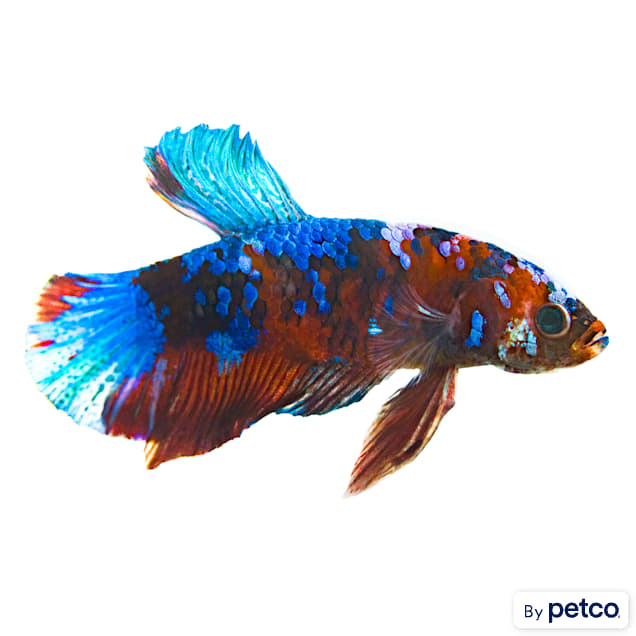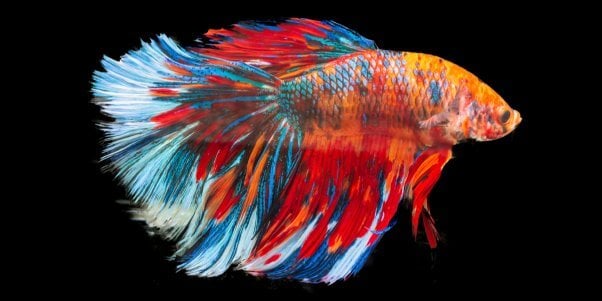Betta Fish Lifespan: How to Guarantee Your Betta Lives Longer
Betta Fish Lifespan: How to Guarantee Your Betta Lives Longer
Blog Article
Reproducing Betta Fish: a Comprehensive Step-By-Step Overview to Successfully Raising Infant Bettas From Eggs to Adulthood
Breeding Betta fish is a careful venture that requires cautious planning and execution to make certain the effective development of fry from eggs to grow fish. As the male Betta vigilantly constructs a bubble nest and guards the precious eggs, the subsequent phases of care and change demand attention to information and understanding of best practices.

Selecting Reproduction Pairs
When starting the journey of breeding Betta fish, picking the best breeding sets is vital to accomplishing desirable attributes and a healthy and balanced lineage - betta fish. The initial step in this procedure is to determine the details attributes you wish to enhance or preserve, such as color, fin kind, and body form. It is vital to pick genetically varied sets to avoid inbreeding, which can result in health and wellness problems and undesirable attributes
Review potential reproducing prospects thoroughly. A healthy male Betta ought to display dynamic colors, an active temperament, and well-formed fins, while the lady must likewise display dynamic pigmentation and a rounded stubborn belly, suggesting readiness for spawning. Observing the character of both fish is crucial, as hostile or overly shy people might not reproduce efficiently.
Keeping records of the parent fish's ancestry can help you track genetic qualities and prospective problems. Eventually, spending time in the choice procedure will dramatically boost the chance of generating strong, dynamic offspring that meet your breeding goals.

Preparing the Reproduction Container
Producing an ideal breeding environment is a key step after choosing suitable sets for Betta fish. The breeding storage tank ought to be specifically made to offer comfort and boost the natural breeding habits of the fish. Begin with a container dimension of at least 10 gallons to guarantee sufficient room for both the man and women Bettas.
Keep a mild filtering system to keep the water tidy while avoiding strong currents that can worry the fish. Additionally, an air rock can be included to provide oxygenation without interfering with the water surface area also much.
Temperature policy is important; go for a steady series of 78-82 ° F(25-28 ° C) making use of a reliable heating system. The pH level should be kept between 6.5 and 7.5, and regular water adjustments are required to guarantee high water high quality.
Incorporate drifting plants or spawning sponges to create hiding places for the female, while likewise motivating bubble nest structure by the man - betta fish. Make sure the container is totally free from sharp designs and any possible risks, as the well-being of the fish need to always be focused on during this important stage of reproduction.
The Breeding Process
Normally, the navigate to this website reproducing procedure for Betta fish entails a collection of distinctive and visible habits that suggest readiness for reproduction. The male Betta begins by building a bubble nest at the water's surface, which offers as a website for the fed eggs. This nest is crucial, as it provides a safe linked here setting for the eggs till they hatch out.
As soon as the nest is developed, the man will display courtship behaviors, such as flaring his fins and exhibiting vivid shades to bring in the lady. The woman, upon noticing the male's readiness, will certainly react by presenting upright red stripes along her body, indicating her receptiveness.
The fertilized eggs then fall to the bubble nest, where the male meticulously collects and returns them to the nest. Following this, the male presumes duty for guarding the nest and making sure the safety and security of the eggs till they hatch out, usually within 24-36 hours.
Taking Care Of Betta Fry
Looking after Betta fry calls for cautious interest to their atmosphere and nourishment to guarantee healthy growth and development. After hatching out, Betta fry are very small and at risk, necessitating a stable and tidy environment. Keeping a water temperature in between 78 ° F and 80 ° F is vital, as Betta fry thrive in warm conditions. Furthermore, ensure that the water is without unsafe toxic substances; normal water modifications of 10-20% are suggested to preserve optimal water top quality.
Feeding Betta fry is equally vital. They should be supplied infusoria or finely smashed top notch fry food, hop over to here as their mouths are too tiny to manage bigger particles. As they expand, you can progressively introduce larger foods, such as infant brine shrimp or powdered flakes, to ensure they get appropriate nutrition. Feed them little amounts several times a day, bewaring not to overfeed, which can result in water top quality problems.
Transitioning to Adult Bettas
As Betta fry fully grown, transitioning them to grown-up Bettas is a critical phase that calls for mindful management of their environment and social interactions. This procedure commonly begins when the fry reach around 6 weeks of age, at which point they can be gradually presented to a more structured living setting.
To promote this change, it is vital to guarantee that the water criteria-- such as temperature level, pH, and ammonia degrees-- are optimal and secure. Grown-up Betta fish grow in cozy water (around 78-80 ° F) with a pH of 6.5 to 7.5. Gradually adjust the fry to these conditions to decrease anxiety.
Social communications are an additional essential aspect; male Bettas are notoriously territorial and hostile. It is advisable to different males into individual storage tanks as they mature. Women Bettas can be housed together, however care should be taken to monitor for signs of aggressiveness.
Furthermore, nutritional adjustments should be made as the fry expand. Incorporate top quality pellets and live foods to sustain their growth and health and wellness. By handling these factors successfully, you can promote a successful transition to adulthood for your Betta fish.

Verdict
Successful reproduction of Betta fish needs careful interest to information throughout the whole process, from picking genetically diverse pairs to providing ideal treatment for fry. Additionally, a balanced diet regimen and steady adjustment to adult environments are crucial for the development and advancement of Betta fish.
Report this page